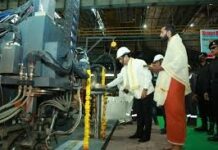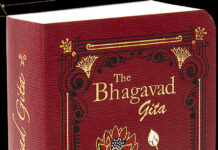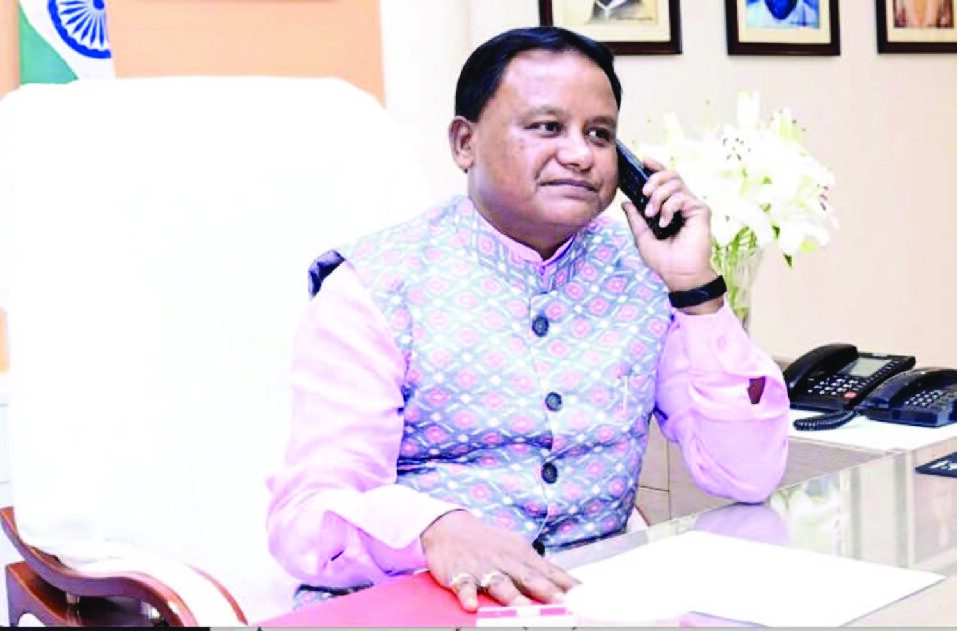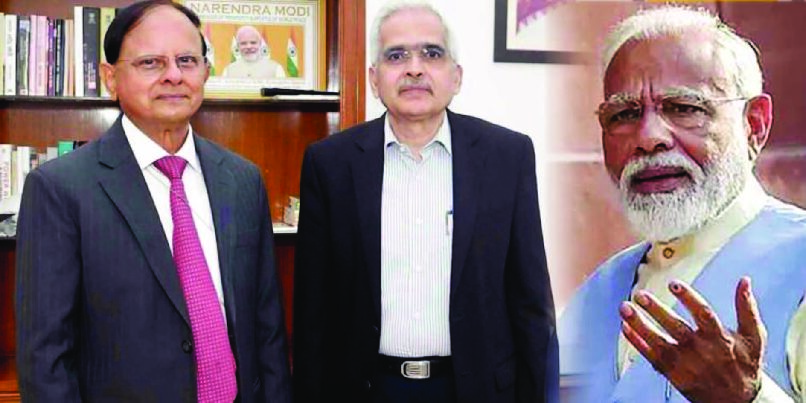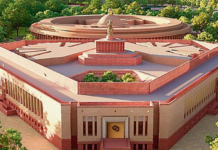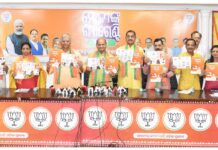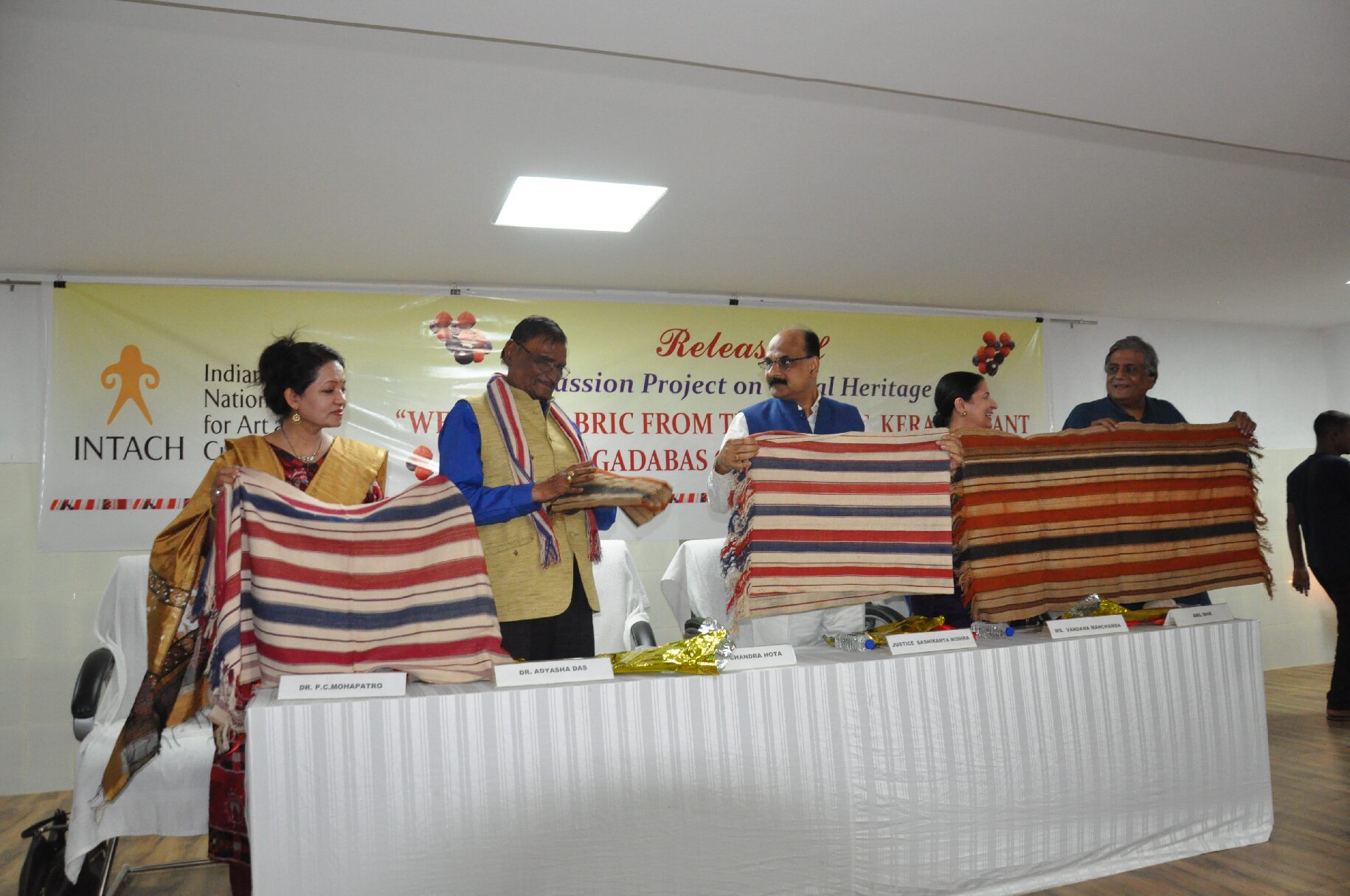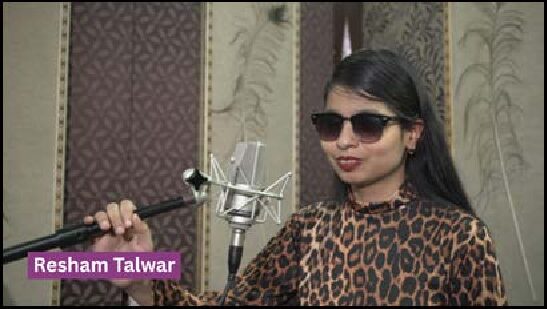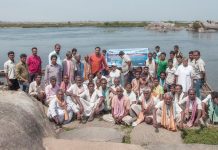Puri, a city on the eastern coast of India is known the world over for its great temple of Lord Jagannath which is one among the four holiest places of pilgrimage (Chaturdham) in India. Right from the dim days ‘of history, saints and savants of different faiths have visited Puri for salvation. Thus Lord Jagannath has become the center of assimilation of various religious faiths and beliefs from time immemorial.
According to legend the Lord was being worshipped in the form of Nilamadhav by a Savara (Tribal) King, Viswa Vasu. Subsequently King Indradyumna erected a temple in honour of the Lord and worshipped Him. The temple was destroyed in course of time. After some
centuries King Jajati erected another temple and worshipped the deities Balabhadra, Jagannath and Subhadra. The present gigantic temple which dominates the landscape for kilometers around was built only in the 12th century A.D. by King Chodoganga Dev.
The Jagannath Temple at Puri, built in the 12th century A.D by Ananta Varman Chodaganga Deva, is among the first specimens of Orissan temple architecture. The temple rises to a height of 214 Feet 8 inches from the road level. The temple has four gates on four sides, known as Simhadwara, Aswadwara, Vyaghradwara and Haswtidwara Le., the Lion’s Gate, the Horse’s Gate the Tiger’s Gate and the Elephant’s Gate. The temple has two concentric walls. The outer wall is called meghanada Prachira (665 ft. by 640 ft) and the inner wall is called Kurma Vedha (420 ft by 315 ft).
The temple contains some of the finest specimens of Orissan architecture and sculpture..On the outer walls of the temple, thick .layers of plaster had been applied to save the beautiful works of art from the damazging effects of saline air, which are now being removed, revealing exquisite sculpture depicting life of Krishna.
The Jagannath temple is a complete example of the fully developed Kalinga style, having all the four essential parts the Deul or the sanctum sanctorum, the Jagamohana or the Audience Hall, the Nata Mandap or the Dancing Hall and the Bhoga Mandap or the Hall of Offering.
As one enters the temple through the Simhadwara (Lion’s gate), one first meets, to his right, the image of the Patitapaban (the Redeemer of the Lowly) on a raised platform. It is said that all those who have no right to enter the temple get the privilege of the Darshan of Lord Jagannath in the form ofPatitapaban, visible from outside the temple gate.
As we move on, we reach the twenty-two holy steps, Baisi Pahacha towards the left of which is the shrine of Viswanath, who rather unusually faces the west. As we climb up the Twenty two steps, we customarily turn left and move on towards the shrines of Satyanarayan, Ganesh, Mangala, Vimala, Saraswati, Laxmi the sun God and a few others before we enter the sanctum sanctorum where, on the Ratna Simhasana stand the three presiding deities: Jagannath, Balabhadra and Subhadra along with Sudarsana Chakra, the celestial wheel of Vishnu.
Koili Baikuntha is located beyond the Kurma Bedha near the northern gate. It is said to be the most ancient place in Niladri. It is said that Nilamadhab was worshipped here by Viswabasu. The word Koili may be Kaivalya. In south India, Loili or Kovil stand for the temple. According to a legend here Krishna once appeared before Radha in the shape of a Koili (Koal) or cuckoo. It is known as the burial ground for the Trinity. At Koili Baikuntha within the Jagannath temple premises, the old icons are cremated after the new ones are installed on the occasion of the Navakalebara which comes once in every twelve years.
Mohaprasad and other offerings made to the Deities of the Jagannath Temple are sold in public in Ananda Bazar on the north-east corner of the outer enclosure of the temple. It is perhaps the biggest open-air hotel in the world where everyday thousands of pilgrims buy and eat various types of food sold at moderate prices.
The temple of Lord Jagannath is called Bada Deula (the great temple). The sea is Mahodadhi (the great ocean). The main road of the city is Bada Danda (the great road). The offering to Lord Jagannath is Mahaprasad (the holiest foOd). The cremation ground at Puri is Swargadwara gateway to heavan.
Every day, throughout the year, fifty-six varieties of dishes are prepared and offered to the Deities of the Jagannath Temple. The food offering is steam-cooked and is offered first to Lord Jagannath and then to Goddess Vimala after which it turns into Mahaprasad.
The Mahaprasad, the Holy Food; is freely partaken by people of all castes and creeds without any discrimination. Mahaprasad plays a very important role in all social and religious rituals in Oriya homes.
Entry into the temple is restricted to Hindus only. But a good observation post can be found on top of the Raghunandan Library from where one can have a full view of the temple, its exquisite sculptures and the activities inside the premises.
Puri is also one of the most popular seaside resorts where the roaring waves and the golden beach can be savoured under a sky in radiant colours. A sea-bath in Puri is a most pleasant and rewarding experience.
A few other temples in an out side Puri Town, connected with the rituals of Shri Jagannath Temple are mentioned below:
The Paoeha Paodavas:
Out of many, there are five important Siva temples in this holy town which are known together as ‘Pancha Pandava’ or the five Pandavas. Those temples are Sri Lokanath, Sri Jameswar, Kapalamochana, Markandeswar and Sri Nilakantha.
Sri Lokanath Temple:
The Lokanath temple is situated about 3 Kilometers away from the Jagannath Temple of the western outskirts of the town. Its presiding deity, Lokanath a Lingam. This temple is ranked next to the Sri Jagannath temple. In ancient time, Puri was also a seat of Saiva worship. Legend says that the ‘Linga” of the Lokanath temple was installed here by Lord Rama. This Linga remains submerged in water throughout the year and is visible only on the night of Pankodhar ekadasi before the Sivaratri, when all the water is bailed out to enable thousands of devotees to see and worship the lord. Lord Lokanath’s ‘Bije pratima’ (his representative image) is in the Sri Jagannath temple, known as Bhandar Lokanath. He is the Guardian Deity of the temple treasure house. Lokanath is associated with Jagannath in several rituals, like Sivaratri, Chandan Yatra, Sital Sasthi etc.
The Lokanatha Temple is being managed by a trust board under the control of the State Endowment Commissioner.
Jameswar Temple:
This temple, situated about a km, from the Jagannath temple, is connected with the rituals of Chandan Yatra, Sagar Bije, Ashram Bije, Sital Sasthi, Champak Dwadasi etc.
Kapalamochan Temple:
Situated south-west of Sri Jagannath temple in the Manikarnika street, this temple has connection with certain rituals of Sri Jagannath temple, e.g. chandan Yatra, Sitalsdasthi. It is managed by a Committee.
Markandeswar Temple :
Situated in the Markandeswar street by the side of the Markandeswar tank, to the north of the Jagannath temple, it is connected with the rituals of Chandan Yatra, Balabhadra Janma, Ashram bije, Sitalsasthi, Kaliyadalan etc. of the Jagannath temple. It is. managed by a committee. There are ancient stone inscriptions in the temple pertaining to the Ganga dynasty .
Nilakantha Temple : Situated on the bank of the Indradyumna temple, to the north-east of the Gundichaghar, it is connected with Chandan yatra, Sitalsasthi rituals and is managed by the committee. There are some other Nilakantha temples.
Gundicha Temple :Next to the Great Temple, the most important sanctuary of Jagannath is the Gundicha temple, the abode to which Jagannath, Balabhadra and Subhadra are driven in their wooden chariots once in a year, during the Ratha Yatra. It is situated at the Northen end of the great avenue (Badadanda). The three deities stay there for 7 days during Srigundicha Rath Yatra.
Nrushingha Temple near Gundicha Ghar: It has connection with the Navakalevar ceremony, of Lord Jagannath.
Mausi Maa or Ardhasini:
Situated almost on the midway of the grand road, it is a small temple of the Goddess Ardhasini. She is also called Mausi Maa (the Mother’s sister) of Lord Jagannath. On the return Car festival day, ‘Poda pitha’ (one kind of cake) bhog is offered to Jagannath on behalf of this temple. It is managed by a committee.
Tota. Gopinath
In this Ashram, Rashikananda Goswami used to worship the idol of Sri Krishna. The temple has beautiful sculptures of Krishna and Radha and is located in serene pastoral surroundings.
Alam Chandi Temple:
It is situated in the Kumbharapada area and connected with the Saptapuri, Makar Sankranti and Nava Kalevar rituals.
Dakshina Kali Temple:
The Goddess Dakshina Kali plays an important role in the ‘niti’ of Saptapuri Amavvasya.
Naravani Temple:
Situated in Dolamandap street. During the puja for sixteen days in the month of Ashwina, the images of Durga & Madhav from Srimandir visit this temple for a period of eight days.
Daria Mahavir or Dedi Banuman :
This temple is on the seashore of Balukhanda area and is connected with Pana Sankranti . ritual of the Jagannath temple.
Charchika Temple:
Situated near the Sri Jagannath temple office on the grand road. The carpenters and Bhoi sevaka worship this goddess at the time of the construction of Chariots.
Chakratirtha Naravan (Nrusingha):
Situated on the seashore in the Chakratirtha area. This temple is connected with the Nrusingha Janma ritual of the Jagannath temple.
Kanaka Durga temple:
It is in the premises of the present Srinahar (palace) of the Maharaja, in front of the Sri Jagannath temple Office. Certain materials for preparation of bhog for the Deities of these temples are supplied by the Sri Jagannath temple administration.
The Deities of these temples are the home-Deities of Gajapati Maharaja.
Siddha Hanuman Temple:
Situated at a little distance behind the Gundicha temple. It is believed that the poet saint Tulsi Das stayed here for some time when he visited Puri.
Other Thakurani Temples :
Some of the famous Thakurani (Goddess) temples are mentioned below: Varahi, Gachhakali (Bali sahi), Baseli (Baseli sahi), Vanadurga (Manikarnika sahi), Ramachandi (near Rly. Station), Harachandi (Harachandi sahi), Smashanachandi (near Swargadwar), Saptamatruka (Markandeswar sahi), Jaduani (Kundhaibenta sahi), Jhadeswari (Station road), Uttarakali (Matimandap sahi), Mangala (Bimanbadu sahi),Varahi Baseli and Harachandi get daily ‘Khei’ from the ‘Kotha bhog’ of the Sri Jagannath temple.
Jayadurga Temple (Bharati Kotha):
Situated near the Narendra tank. The expenses for the daily and periodical bhog of the goddess in borne entirely by the Sri Jagannath temple administration.
Bali Harachandi:
A beautiful place near Brahmagiri. This temple has relation with the Sri Jagannath temple in respect of a ritual on the Mahanavami day in the month of Ashwina.
There are so many other interesting places within the precincts of Jagannath temple and inside the Puri town which are frequently visited by the pilgrims or devotees throughout the year on different festive occasions.







